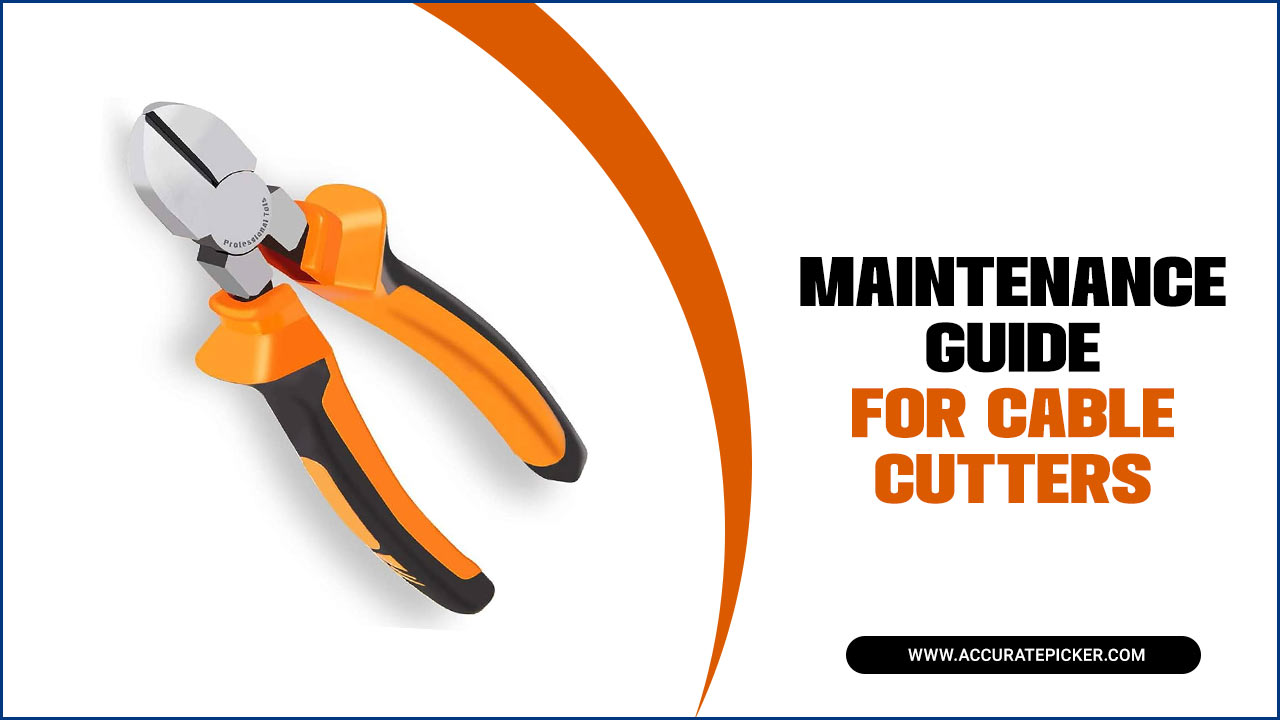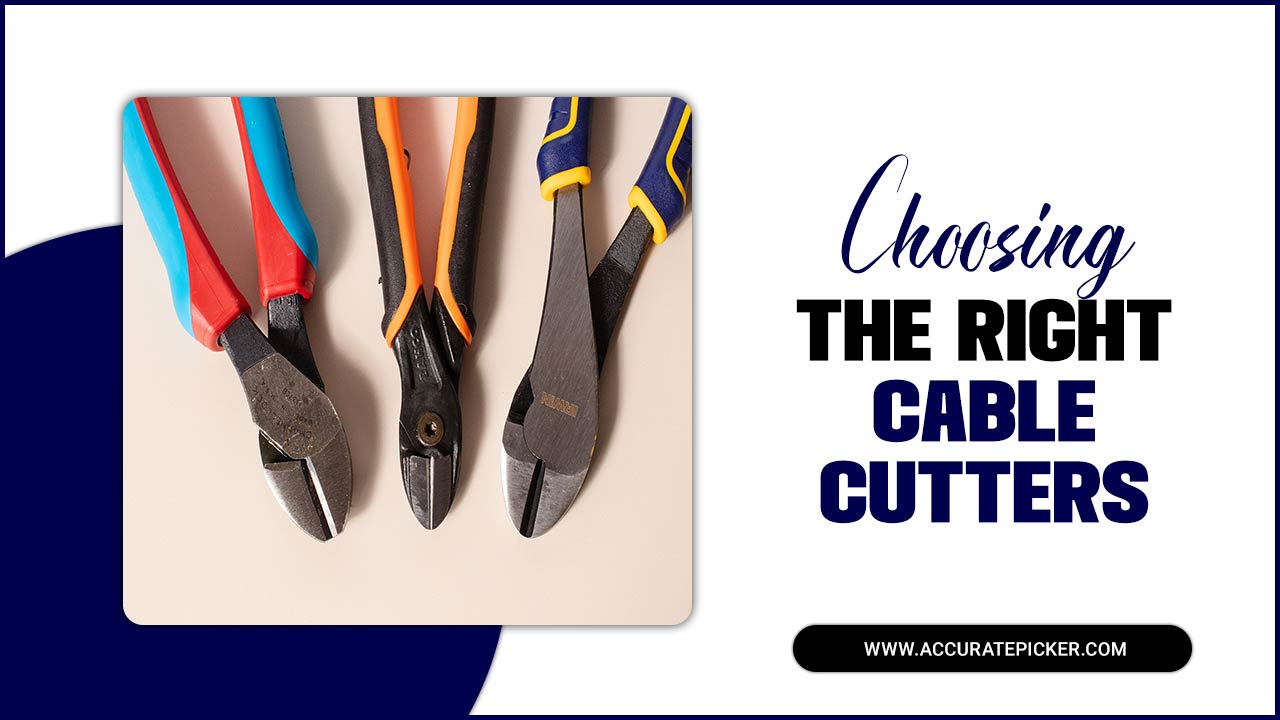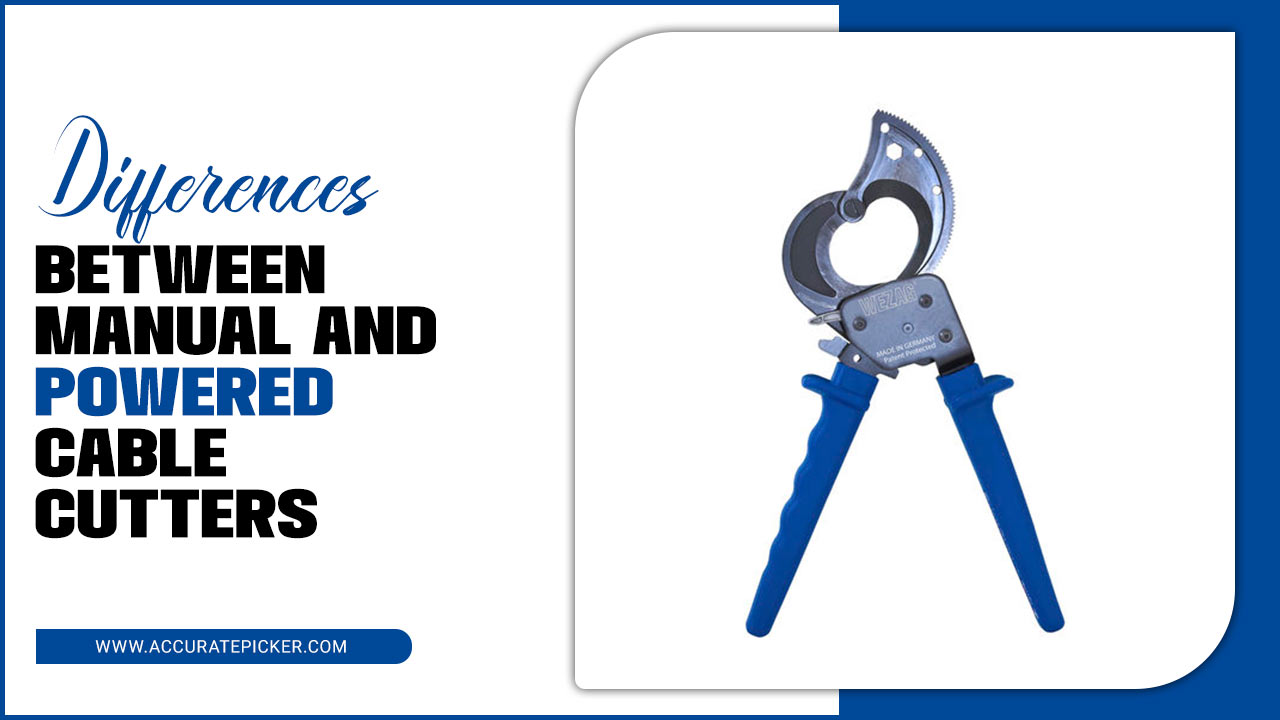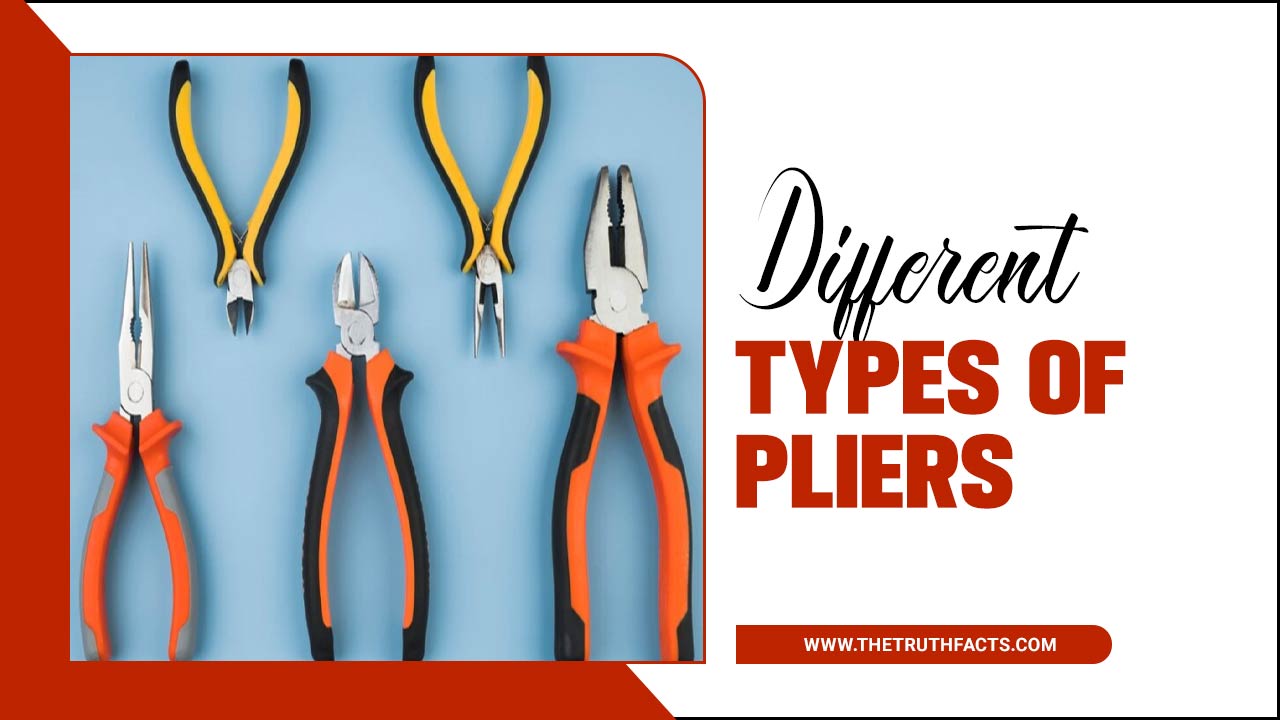Choosing the right pliers for the job is essential for any DIY enthusiast. Pliers are a versatile tool that can be used for a variety of tasks, from gripping and cutting to bending and crimping.
With the wide variety of pliers available on the market, it can be difficult to decide which ones are the right ones for the job. This article will provide some helpful tips for selecting the best pliers for the job, so that you can get the most out of your toolkit.
By taking the time to understand the different types of pliers available, you will be able to make an informed decision and find the right pliers for any task. With the right set of pliers, you will be able to tackle any project with confidence.
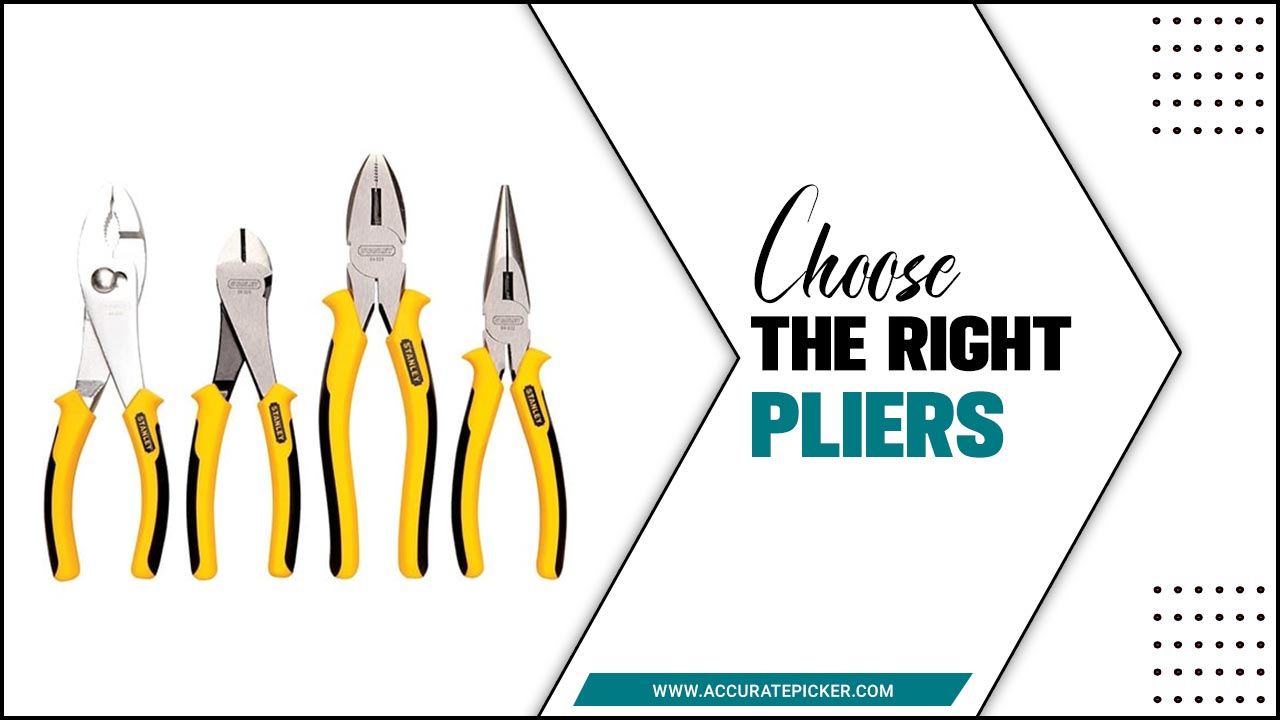
Tips For Choosing The Right Pliers
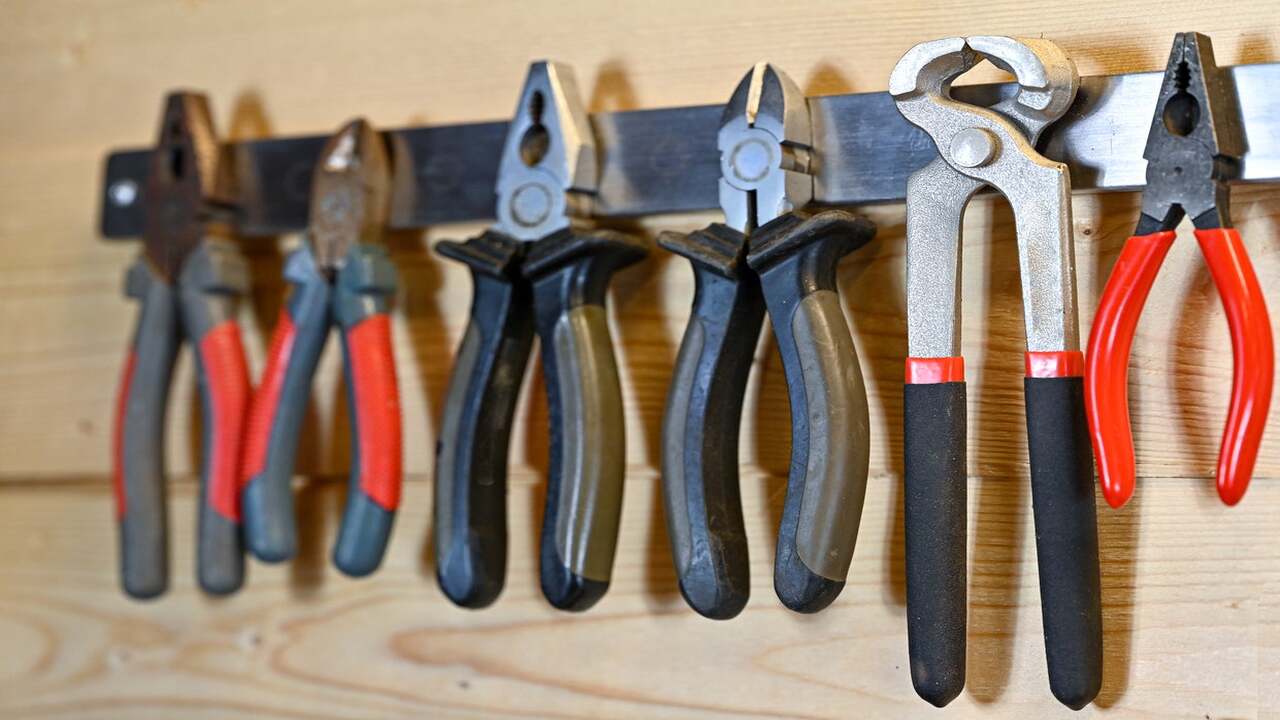
When it comes to choosing the right pliers for the job, there are a few important tips to keep in mind. Pliers come in a variety of shapes, sizes, and materials, so it’s important to select the right ones for the job at hand. Before making your selection, consider the size and strength of the pliers, the materials they are made from, and the type of grip they provide.
Additionally, it’s important to think about how often you will use the pliers and what type of work you will be doing with them. With these tips in mind, you can ensure you select the right pliers for the job.
1. Types Of Pliers

There are a variety of pliers available for different tasks. Needle-nose pliers are the most common and feature a narrow, pointed tip for gripping small items. Long-nose pliers are similar to needle-nose pliers but with a more extended reach.
Slip-joint pliers are adjustable and feature a joint that allows the jaws to open wider than standard pliers. Lineman pliers are designed for heavy-duty cutting and twisting of wire. Combination pliers are designed for multiple tasks, such as cutting and gripping. Diagonal pliers are ideal for cutting through wires and nails.
End-cutting pliers are designed for cutting bolts, screws, and nails. Finally, Vice-grip pliers are adjustable and lock into place, making them ideal for gripping objects. When choosing a pair of pliers, it is important to consider the size, shape, and material of the tool to ensure it is suitable for the task.
2. Slipjoint Pliers
Slipjoint pliers are a handy tool to have in your toolbox. They are designed to be adjustable, making them a must-have for any job that requires gripping or twisting. When looking for the right slipjoint pliers for a job, consider the type of material you are working with. Harder materials may require a stronger grip, while softer materials may need a gentler grip.
Also, look for pliers with a comfortable handle, as this will help you to grip the pliers better and make it easier to get a good grip on whatever you are working with. Lastly, make sure you select the correct size for the job. Slipjoint pliers come in a variety of sizes, so make sure you choose the right ones for the project you are working on.
3. Tongueandgroove Pliers
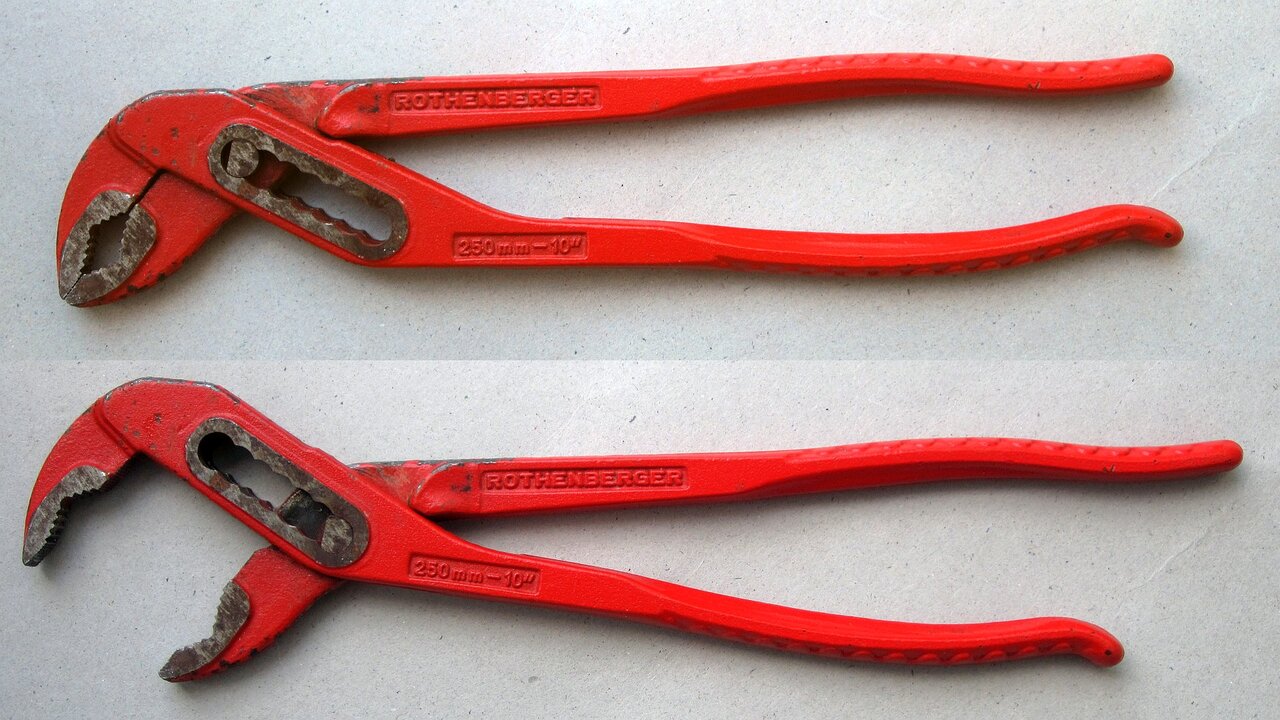
Tongue and groove pliers are a must-have for any toolbox. They are designed to grip objects with a narrow groove or angle, making them perfect for plumbing, automotive, and carpentry. When selecting the right pair of pliers for the job, consider the size and shape of the objects you’ll be working with and the type of job you’ll be doing.
Choose a pair that is comfortable to hold and has sharp, well-maintained jaws. Tongue and groove pliers with a slip-joint feature are ideal for gripping small objects and for projects that require more precision. For larger projects, a pair with an adjustable joint is best. Make sure to inspect the pliers for any damage before use.
4. Endcut Pliers
When it comes to selecting the right pliers for the job, endcut pliers are a great choice. They are designed to cut off nails, screws, wire, and other small objects. They feature sharp, pointed blades that allow you to make precision cuts quickly and easily. The handles of the pliers also have a comfortable grip that makes them easy to use.
Additionally, endcut pliers are relatively inexpensive and can be found at most hardware stores. To ensure you select the best pliers for the job, consider the type of material you are working with and the size of the objects you need to cut. Choose a pair of pliers that have blades that are sharp and strong enough to handle the material you will be using. Additionally, the handles should be comfortable and easy to grip so that you are able to make precise and accurate cuts.
5. Longnose Pliers
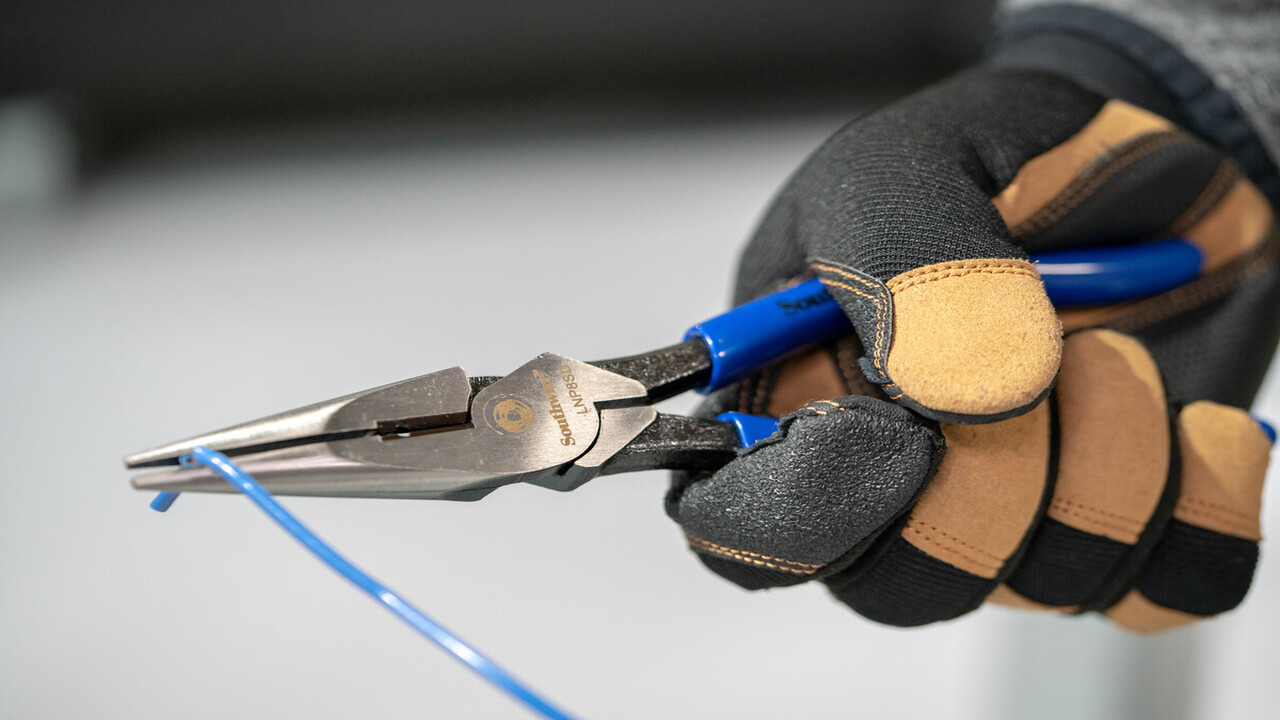
Longnose pliers are a versatile tool that can be used for a variety of tasks. They are typically used in electrical and jewelry work, but can also be used in many other industries. They have a long, narrow head and a pointed nose that allows them to reach into tight spaces.
They are also designed with a curved handle that allows for greater control when gripping small items. When choosing the right longnose pliers for the job, consider the size, shape, and material of the pliers. The size should be appropriate for the job and the material should be strong enough to hold up to the task. For example, a thicker pair of longnose pliers may be needed for heavier jobs.
Additionally, look for pliers with a comfortable handle for better control and a non-slip grip. Finally, consider the shape of the pliers. Some longnose pliers feature a curved jaw, while others have a straight jaw. Depending on the job, one type may be more suitable than the other.
With the right pair of longnose pliers, you can complete any task with ease and precision.
Considerations
When choosing the right pliers for a job, a few considerations should be taken into account. Firstly, think about the type of material you’ll be working with. Pliers designed for metal will not work as well on plastic, for instance. Secondly, consider the size and shape of the material.
Pliers come in many different sizes and shapes, so make sure to pick the ones that are best suited for the job. Thirdly, make sure the pliers have a comfortable grip, as this will make it easier to work with them. Finally, look for pliers with extra features, such as a cutter or a crimper, as these can be beneficial for certain tasks.
With these tips in mind, you’ll be able to find the perfect set of pliers for your next project.
Size
When choosing the right pliers for a job, size is a critical factor. Pliers come in a variety of sizes, from very small for intricate projects to large for more robust tasks. Consider the size of the project when selecting pliers. If the job requires precision, then a smaller pair may be the best choice.
On the other hand, a larger pair may be necessary for larger projects that require more leverage. Additionally, many pliers come in adjustable sizes, which can be beneficial when working on a variety of projects. Furthermore, choosing a pair with an ergonomic handle can help reduce fatigue and promote a comfortable grip. Consider all of these factors when selecting the right size pliers for a job.
Features
When it comes to choosing the right pliers for the job, there are several important factors to consider. The type of material that needs to be cut or worked on should be taken into account, as some pliers are better suited for certain kinds of materials than others.
Size is also a key factor, as pliers come in various lengths and sizes, from mini-pliers to large adjustable pliers. Additionally, the type of handle is important, as some pliers are designed to fit comfortably in the hand while others require more force to grip.
Finally, the quality of the pliers can make a difference in the finished product, so be sure to select pliers that are made from durable materials and have a good finish.
Material
When selecting pliers, one of the most important factors to consider is the material they are made of. Pliers are typically made of steel, stainless steel, aluminum, or plastic. Steel pliers are strong and durable, making them great for heavy-duty projects. Stainless steel pliers are resistant to corrosion and offer superior performance.
Aluminum pliers are lightweight and tend to be more affordable, while plastic pliers are great for lighter projects. Each type of pliers offers its own advantages and disadvantages, so it’s important to consider what type of project you’re tackling before making your purchase.
Comfort
When selecting pliers for a job, comfort is a key factor to consider. Pliers with rubberized handles are much easier to grip and won’t slip out of your hands when you’re putting pressure on the tool.
Ergonomically designed handles provide extra grip and comfort while reducing fatigue in hands and wrists. Additionally, look for pliers with a good balance that feel comfortable in your hands.
If you’re working on a project that requires a lot of force, a longer handle with a larger grip area will give you better leverage and control. Finally, check to make sure the pliers open and close smoothly and with minimal effort. Pliers that require too much force to open or close can cause fatigue over time and increase your risk of an injury.
Conclusion
Finding the right pliers for the job can make a big difference in the quality of the work. It is important to consider the size of the job, the material you are working with, and the type of pliers that will work best.
Research different types of pliers, such as needle-nose, locking, and slip-joint, and decide which one will be the most effective for your project. Also consider the comfort of the handle and the quality of the tool. With the right pliers, you can get the job done quickly and efficiently.
FAQ’s
1.What Are The Most Common Types Of Pliers?
Ans: The most common types of pliers are slip-joint pliers, long-nose pliers, linesman pliers, and diagonal pliers. Slip-joint pliers are typically used for gripping, twisting, and turning. Long-nose pliers are used for reaching into tight spaces and for cutting wire. Linesman pliers are used for cutting and gripping wires. Diagonal pliers are used for cutting wires and other materials in tight spaces.
2.What Are The Advantages And Disadvantages Of Each Type Of Pliers?
Ans: The main advantages of needle-nose pliers are that they can reach into tight spaces due to their slim design and can be used for a variety of tasks. However, they are not as strong as other types of pliers, so they may not be suitable for heavy-duty work. Slip joint pliers are much more durable and can be adjusted to fit various sizes.
However, they cannot reach into tight spaces like needle-nose pliers. Long nose pliers are similar to needle-nose pliers with an extended reach, but they are not as strong as slip joint pliers. Finally, linesman pliers have a longer grip and greater cutting power, making them perfect for cutting through hard materials. However, they cannot reach into tight areas like the other plier types.
3.What Is The Best Material For Pliers?
Ans: The best material for pliers depends on the intended use. For general purpose work, stainless steel pliers are a good choice because they are durable and resistant to corrosion. For electrical work, fiberglass-reinforced nylon pliers are a good choice as they are non-conductive and resistant to heat.
For delicate work, carbon steel pliers with a smooth finish are the best choice as they provide a good grip and are less likely to cause damage to delicate materials.
4.What Should Be Considered When Selecting The Right Pliers For The Job?
Ans: When selecting the right pliers for the job, it is important to consider the size and shape of the object that needs to be gripped, as well as the material. The pliers should also be designed to work with the specific type of job at hand.
The type of handle should also be considered, as certain handles may be better suited for certain jobs and provide a better grip. Finally, the overall quality of the pliers should be taken into consideration.
5.What Safety Precautions Should Be Taken When Using Pliers?
Ans: When using pliers, it is important to wear safety glasses to protect your eyes from potential debris or sparks. Additionally, it is important to use the right type of pliers for the job, as using the wrong type of pliers can cause injury.
Always make sure to keep your pliers well maintained and lubricated to ensure that they work properly. Finally, it is important to use the pliers correctly and to avoid using them on objects that are too hard or too large for them.


